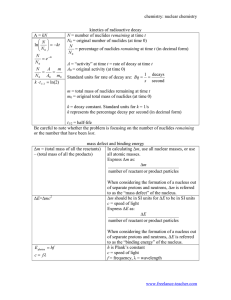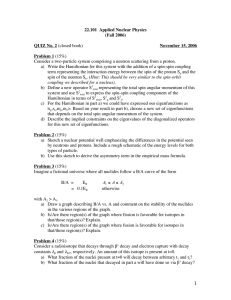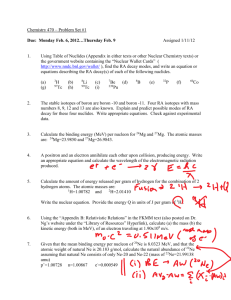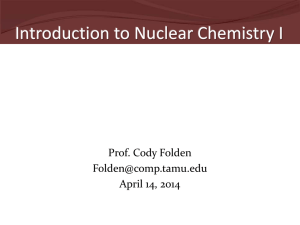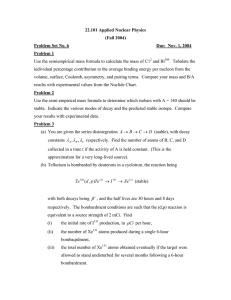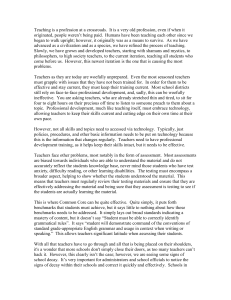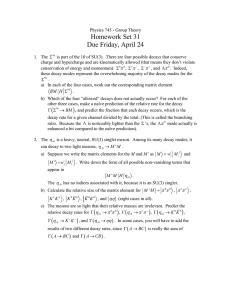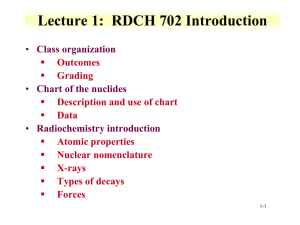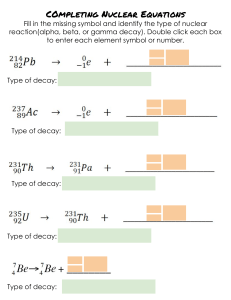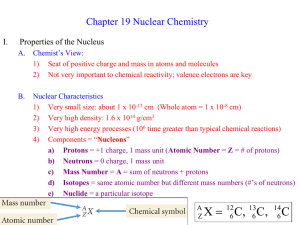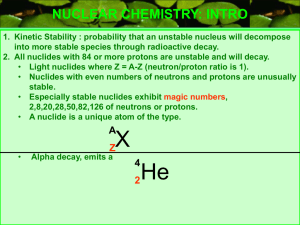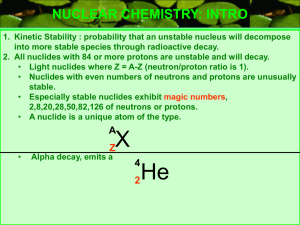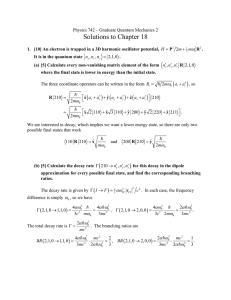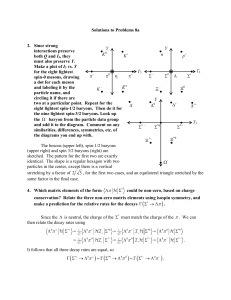22.101 Applied Nuclear Physics (Fall 2006) Problem Set No. 6
advertisement
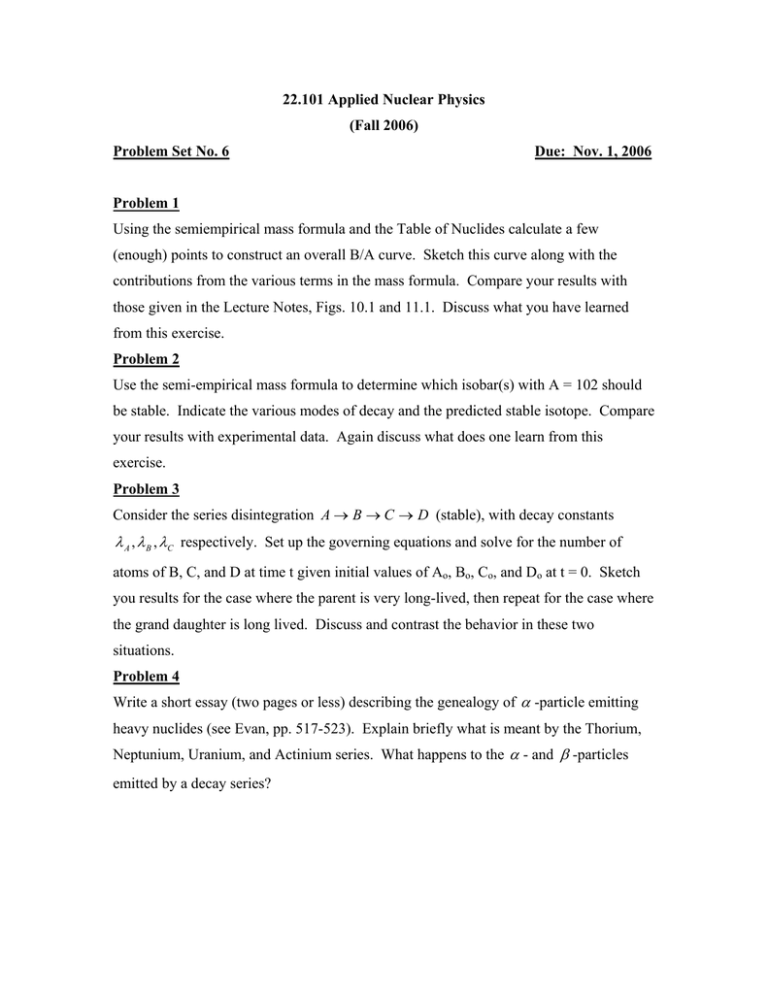
22.101 Applied Nuclear Physics (Fall 2006) Problem Set No. 6 Due: Nov. 1, 2006 Problem 1 Using the semiempirical mass formula and the Table of Nuclides calculate a few (enough) points to construct an overall B/A curve. Sketch this curve along with the contributions from the various terms in the mass formula. Compare your results with those given in the Lecture Notes, Figs. 10.1 and 11.1. Discuss what you have learned from this exercise. Problem 2 Use the semi-empirical mass formula to determine which isobar(s) with A = 102 should be stable. Indicate the various modes of decay and the predicted stable isotope. Compare your results with experimental data. Again discuss what does one learn from this exercise. Problem 3 Consider the series disintegration A → B → C → D (stable), with decay constants λ A , λ B , λC respectively. Set up the governing equations and solve for the number of atoms of B, C, and D at time t given initial values of Ao, Bo, Co, and Do at t = 0. Sketch you results for the case where the parent is very long-lived, then repeat for the case where the grand daughter is long lived. Discuss and contrast the behavior in these two situations. Problem 4 Write a short essay (two pages or less) describing the genealogy of α -particle emitting heavy nuclides (see Evan, pp. 517-523). Explain briefly what is meant by the Thorium, Neptunium, Uranium, and Actinium series. What happens to the α - and β -particles emitted by a decay series?

